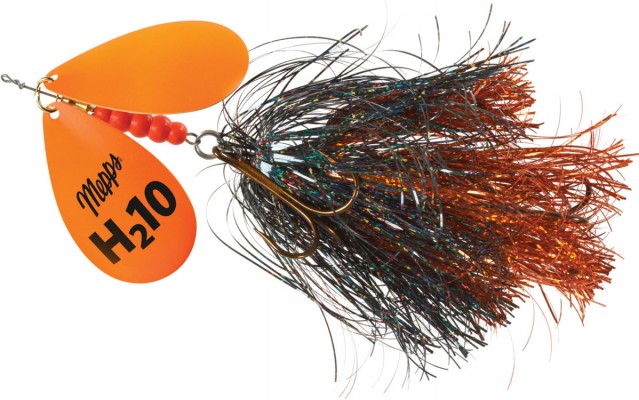Keep it Movin’ for Summer Muskies
Posted by on
The dog days of summer are a great time to be at the lake, swimming, catching some rays and having fun. Although often viewed as a tough time to put fish in the boat, mid-summer muskies can be caught.
Muskies, like other fish, are cold-blooded, which means their body temperature is the same as the surrounding water temperature. So in mid-summer, when water temps hit the 70s or even 80s, a muskie’s metabolism goes up and fish go on the prowl. Look for fish to be in relatively shallow water in some type of cover: wood, rock or weeds for the most part.
With water temps and muskie activity high, your rate of retrieve should match. This is an excellent time to burn a bucktail through shallow cover. The high rate of speed can trigger strikes from active fish.
In recent years, double-bladed bucktails have gained a lot of popularity. These lures feature tandem Size 10 or even Size 13 blades that put out some serious thump. Lures such as the Double Cowgirl from Musky Mayhem or the Mepps H210 produce a lot of vibration that attracts fish.

You’ll notice one thing right away when you start retrieving these double-bladed lures with oversized blades: they create a lot of resistance in the water. You’ll need a reel with a high-speed gear ratio and some serious torque to pull these lures effortlessly through the water all day. Something like the Shimano TranX is perfect, although these reels are pricey. Still, you’ll notice they are a huge improvement over more conventional muskie reels when it comes to burning big double-bladed bucktails.
A muskie’s high summer metabolism rate means it is capable of chasing a fast presentation. Cranking fast also helps you cover a lot of water so you can find fish. Obviously the point of casting lures all day long is to get a fish to bite, but don’t discount a follow or a miss. If that happens, immediately note the fish’s location. Throw back right away to see if the fish will hit, but don’t get discouraged if it doesn’t. Give the fish time to rest or better yet, come back at a major or minor solunar feeding window. When you return, throw the same bait that attracted the fish the first time. After all, it got the fish’s attention once. If that doesn’t work, throw something else. Sometimes a different color or a different vibration will trip its trigger. Or you might come back in the evening with an irresistible topwater. If all else fails, finesse the fish with soft plastics. Work the spot periodically throughout the day until you catch the fish or it appears nothing will work.
Summertime is a great time to be enjoying the water. Kick it up a notch and chase some high-speed muskies.

 Loading... Please wait...
Loading... Please wait...
